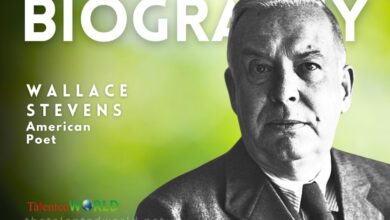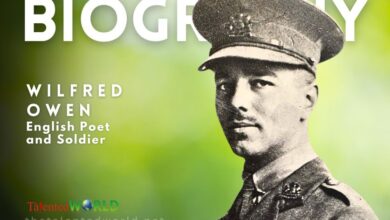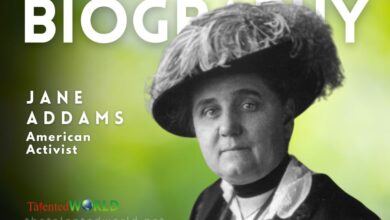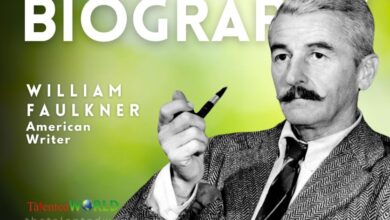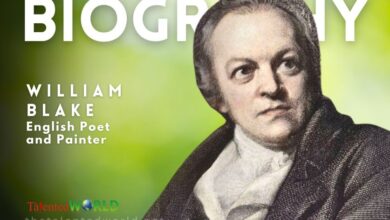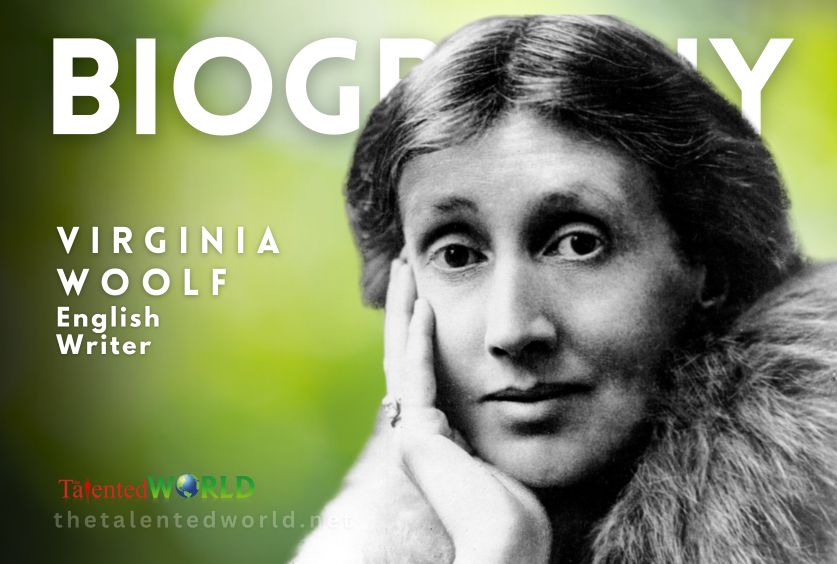
Quick Facts
| Fact | Detail |
|---|---|
| Full Name | Adeline Virginia Woolf |
| Date of Birth | January 25, 1882 |
| Place of Birth | London, England |
| Date of Death | March 28, 1941 |
| Place of Death | River Ouse in East Sussex, England |
| Occupation | Novelist, essayist, publisher, critic |
| Alma Mater | King’s College London |
| Notable Works | Mrs Dalloway (1925), To the Lighthouse (1927), Orlando (1928), A Room of One’s Own (1929), The Waves (1931) |
| Spouse | Leonard Woolf (married in 1912) |
| Parents | Leslie Stephen and Julia Prinsep Jackson |
| Notable Relatives | Vanessa Stephen (sister), Thoby Stephen (brother), Adrian Stephen (brother), George Herbert Duckworth (half-brother), Gerald Duckworth (half-brother), Katharine Stephen (cousin) |
| Literary Contributions | Pioneered the use of stream of consciousness as a narrative device |
| Literary Group | Part of the Bloomsbury Group, an artistic and literary circle |
| Founding | Founded the Hogarth Press in 1917, which published much of her work |
| Key Novels | The Voyage Out (1915), Mrs Dalloway (1925), To the Lighthouse (1927), Orlando (1928) |
| Feminist Influence | The central figure in 1970s feminist criticism, her works have inspired feminism |
| Legacy | Commemorated by statues, societies, and a building at the University of London |
Virginia Woolf Books
| Title | Year |
|---|---|
| Mrs Dalloway | 1925 |
| To the Lighthouse | 1927 |
| Orlando: A Biography | 1928 |
| The Waves | 1931 |
| A Haunted House and Other Short Stories | 1921 |
| Flush: A Biography | 1933 |
| Kew Gardens | 1919 |
| The Mark on the Wall | 1917 |
| The Voyage Out | 1915 |
| The Years | 1937 |
| Three Guineas | 1938 |
| Night and Day | 1919 |
| Jacob’s Room | 1922 |
| Moments of Being | 1972 |
| Between the Acts | 1941 |
| The Death of the Moth | 1942 |
| A Writer’s Diary | 1953 |
| Shakespeare’s Sister: Virginia Woolf October 20 & 26 1928 | – |
| On Being Ill | 1926 |
| A Room of One’s Own | 1929 |
| Street haunting :a London adventure | – |
| The New Dress | 1927 |
| The common reader | 1925 |
| The Widow and the Parrot | 1982 |
| Monday or Tuesday | 1921 |
| A Sketch of the Past | 1939 |
| Women & Fiction | – |
| How Should One Read a Book? | – |
| Mrs Dalloway Annotated | 1929 |
| The Lady in the Looking Glass | 1929 |
| The Duchess and the Jeweller | 1938 |
| The String Quartet | 1921 |
| Roger Fry: A Biography | 1940 |
| Thoughts on Peace in an Air Raid | – |
| Mr. Bennett and Mrs. Brown | 1924 |
| An Unwritten Novel: With the Essay ‘How Should One Read a Book?’ | 1920 |
| Orlando | 1928 |
| Killing the angel in the house | – |
| On Not Knowing Greek | 2008 |
| Oh, to Be a Painter! | – |
| Instants de vie | – |
| The complete shorter fiction of Virginia Woolf ; edited by Susan Dick | 1985 |
| In the Orchard | – |
| The Pargiters | – |
| Women and writing | 1979 |

